Cygnus OA-7 Cargo Overview
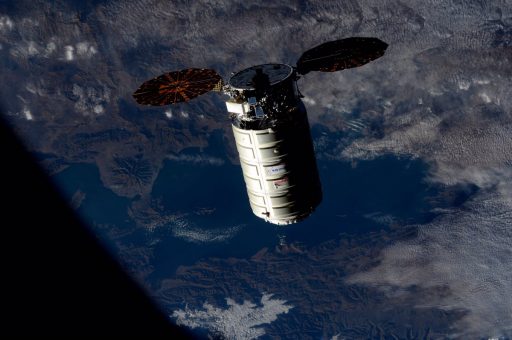
Cygnus OA-7 is the seventh operational cargo-delivery mission by Orbital ATK’s Cygnus spacecraft, one of two commercial resupply vehicles serving the International Space Station’s cargo needs under NASA’s Commercial Resupply Services 1 program.
Orbital ATK’s Cygnus made its first launch in 2013 atop the company’s Antares rocket followed by a pair of operational missions before Antares encountered a catastrophic launch failure on the OA-3 mission in October 2014 – causing a long stand-down of Antares launch operations. While Antares was being redesigned to use new engines, a pair of Cygnus missions launched on Atlas V rockets to keep up a steady chain of supplies headed to ISS. Antares successfully returned to flight on the OA-5 mission in 2016.
NASA and Orbital ATK decided to launch the OA-7 mission atop an Atlas V launch vehicle contracted through United Launch Alliance, switching up the original plan of using Antares for the mission. OA-7 has some importance for getting ISS in a good posture for a busy summer of science operations in 2017, therefore it was NASA’s desire to ensure the vehicle would be able to launch on time and Atlas V is considered an industry-leader when it comes to schedule assurance.
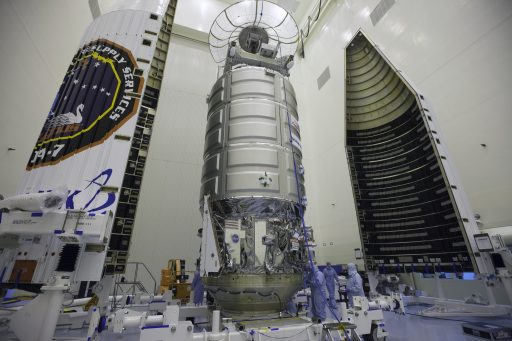
Additionally, Orbital ATK said the company wanted to take some pressure off their personnel after extremely busy months getting Antares ready for its return to flight. A last factor to consider is Atlas V’s higher performance, allowing Cygnus to be packed to capacity with science and resupply hardware.
The Cygnus OA-7 mission is carrying a total cargo upmass of 3,459 Kilograms, comprised of the typical mix of science investigations, crew supplies, systems hardware, spacewalk equipment and CubeSat deployers. The mission is supporting dozens of the 216 studies underway aboard the U.S. Segment during ISS Expedition 51/52 from April through September 2017.
The Cygnus OA-7 spacecraft has been named the S.S. John Glenn in honor of the late NASA Astronaut who was the first American to orbit the Earth and holds the record for the oldest person to fly to space when he returned to orbit aboard the Space Shuttle.
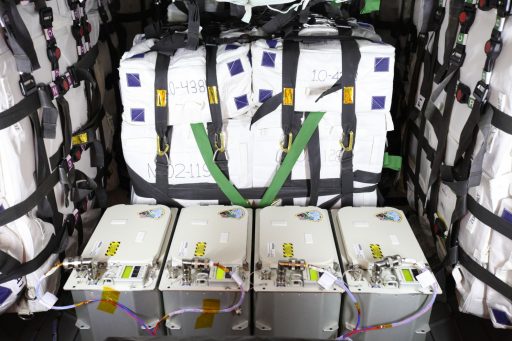
OA-7 is set for liftoff in April 2017 and is booked for an extended stay at ISS of around two months, facilitating the transfer of cargo to the Space Station.
Highlighted science payloads carried by the OA-7 mission include the third SAFFIRE combustion experiment that studies large-scale flame spread in microgravity, the Advanced Plant Habitat for fundamental plant-growth and bioscience research, the RED-Data2 re-entry data recorder that delivers valuable knowledge on how re-entering spacecraft break-up in the atmosphere. Cygnus also carries a wealth of microbiology experiments plus the first batch of QB50 CubeSats operated by a variety of institutions under an international program.
Cygnus will be transporting four Polar freezers, loaded with cold stowage items including various samples to be exposed to the space environment.
- Total Cargo Upmass: 3,459 kg
- Total Pressurized Cargo: 3,376 kg
- Science Investigations: 940 kg
- Crew Supplies: 954 kg
- Vehicle Hardware: 1,215 kg
- Spacewalk Equipment: 73 kg
- Computer Resources: 2 kg
- Russian Hardware: 18 kg
- Unpressurized Cargo: 83 kg
- Total Pressurized Cargo: 3,376 kg
Advanced Plant Habitat
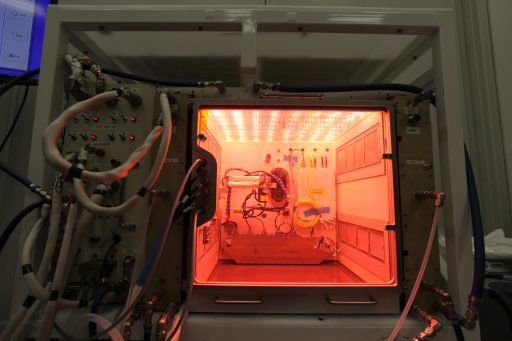
The Advanced Plant Habitat is a nearly self-sufficient plant growth system developed by NASA based on lessons learned from initial plant-growth studies carried out aboard the International Space Station with the Veggie facility. Veggie’s first experiment was completed in June 2014 and since then, the facility was used to grow different kinds of lettuce and some zinnia flowers to learn about the challenges of growing plants in space, aiming to develop a new facility for optimized harvest and less crew time requirements.
The Advanced Plant Habitat (APH) is NASA’s biggest plant-growth chamber deployed to space to date. It was developed by NASA engineers in cooperation with ORBITEC of Madison, Wisconsin that also developed the Veggie facility for NASA. APH is a fully enclosed, closed-loop system with an environmentally controlled growth-chamber that uses over 180 sensors to capture data on the temperature, oxygen / CO2 content, moisture levels in the air, in the soil, near the plant roots, stem and leaf level, and the lighting environment inside the chamber. Red, blue and green LEDs can be used to dynamically adjust the light intensity and its spectrum that can be varied across the visible ranges and into the near-infrared.
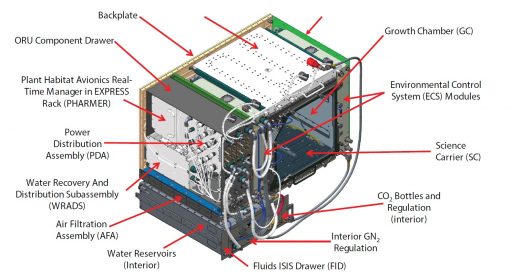
A major difference between Veggie and APH is that the new system only requires minimal crew time to install the science, add water and conduct other maintenance operations. The overall objective of APH is to maximize plant-growth with a minimal input of resources.
The plant chamber itself measures 46 centimeters square and offers 41 centimeters of growth height to the plants, making it the biggest such facility ever deployed by NASA. APH is designed for multiple experiment runs of up to 135 days, it will reside within an EXPRESS rack inside the Japanese Kibo module and the payload will be controlled from the Kennedy Space Center.
The entire APH assembly measures 53 x 91 x 61 centimeters in size, requires 735 Watts of electrical power during normal operations.
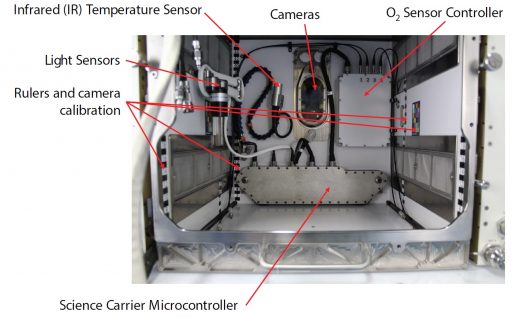
APH comprises a number of subsystems: The Growth Chamber is an enclosed, environmentally controlled volume where the plants will reside and the Science Carrier (SC) holds the plant-growth medium, seeds, water tubes and moisture sensors. While these two components build the plant-growth architecture itself, there are a number of support systems, namely the Environmental Control System (ECS) that controls the growth chamber temperature, humidity and air flow; the Fluid International Subrack Interface Standard Drawer that holds CO2 bottles, water reservoirs and gaseous nitrogen regulators; the Orbital Replacement Unit Component Drawer that facilitates the water distribution system, power system and the instrument controller known as PHARMER; A Water Recovery and Distribution Subassembly, and an Air Filtration Assembly.
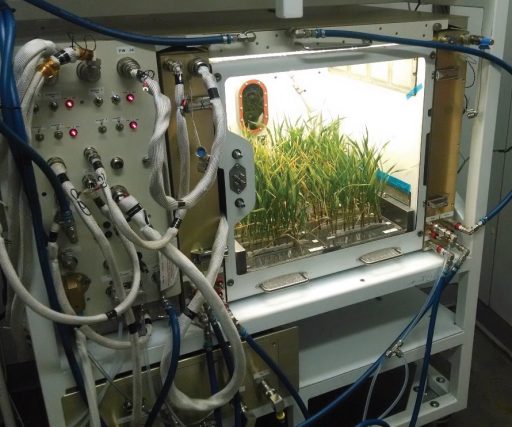
Within the Growth Chamber reside various sensors to document the environment in which the plants grow. A set of three cameras document the plant growth process over time using rulers inside the chamber to help assess the height of the plants. Light sensors provide feedback on the settings of the LED light sources, air composition sensors provide information on oxygen and CO2 content, an infrared temperature sensors provide measurements of the temperature inside the chamber and various humidity and soil moisture sensors provide feedback to the water distribution subassembly.
Watering of the plants is accomplished in an automatic feedback (Veggie required manual watering by the crew members). Water is transferred into the growth medium via various tubes embedded in the soil, porous materials in the rooting material allow water to be transferred to the roots. Nutrients can be injected into the root material by the crew or through the water supply.
Thermal control is accomplished using thermoelectric coolers with a range of +18 to +30°C with an accuracy of +/-0.5 K from the setpoint and the uniformity of the temperature within the chamber is better than +/-1 K. Humidity can be controlled between 50 to 90% relative humidity and is within +/-3% of the set point and uniform to within +/-5% in the plant canopy plane. Light level measurements are collected in the photosynthetically active and the red/far red range.
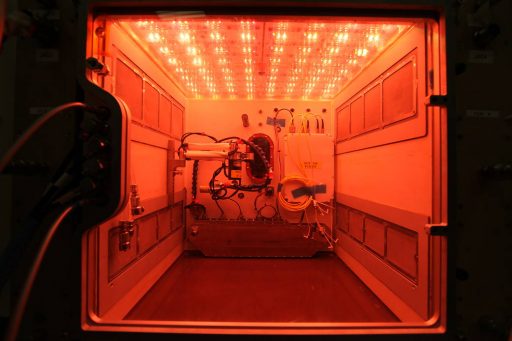
The Growth Light Assembly delivers high-intensity red (630-660 nanometers), blue (400-500nm), green (515-535nm), a broad spectrum white (400-700nm) and a far-red at 730-750 nm. The air within the chamber can contain between 400 to 5,000 ppm (+/-50) of carbon dioxide, allowing a number of variables to be adjusted over the course of the studies to find the best conditions for plant growth.
The development of an operational capability of growing plants on a spacecraft is critical for future deep space missions as plants are a way to provide crew food and recycle carbon dioxide to oxygen. Additionally, growing plants is also considered as a pastime under psychological assessments of future space missions of extended duration.
After activation of the APH facility aboard the Space Station, a test run will be completed with Dwarf Wheat and Arabidopsis to verify all systems are operating and the conditions within the growth chamber are within specification before initiating the first experiment run. Known as PH-01, the experiment will use Arabidopsis, a small flowering plant related to cabbage and mustard. This initial experiment will be compared with ground-based tests to tweak the environment inside the chamber as necessary to achieve growth-rates and yields similar to those seen on the ground.
SAFFIRE-3
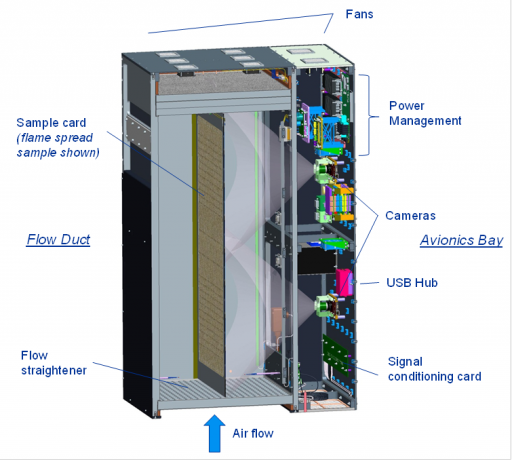
SAFFIRE-III, the third Spacecraft Fire Experiment, will intentionally light a large piece of fabric on fire inside the Cygnus spacecraft after its departure of ISS, a few days before it re-enters Earth’s atmosphere. Only very few experiments were run to study combustion and fire processes in microgravity, let alone large-scale fire progression within a spacecraft. SAFFIRE aims to study a realistic fire on a space vehicle, looking at flame growth, temperatures and oxygen use to assess how microgravity and limited oxygen affect the properties of a fire. Data from SAFFIRE will be used to improve fire safety on future crewed spacecraft and help NASA in choosing materials for future vehicles.
Despite decades of combustion experiments run in space, only few tests have studied spacecraft fire safety and none have studied environment sizes typical for a spacecraft fire due to obvious concerns of running this type of experiment in an inhabited spacecraft. Due to the lack of firm data, spacecraft manufacturers use models and standards for terrestrial fires when designing spacecraft fire safety systems. Although this approach has been successful thus far, there is inherent risk due to the level of uncertainty in modeling large-scale fires in space. SAFFIRE proposes to set fire to material samples around one meter in size to study large-scale flame growth and fire dynamics not possible within the experiment facilities of ISS.
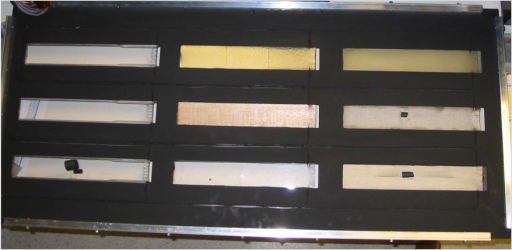
The SAFFIRE experiment package consists of a flow duct and an adjacent avionics bay housing various sensors and associated power and data systems. Atop the flow duct is a fan creating air flow through the system and on the bottom is a grid serving as a flow straightener.
The SAFFIRE Experiment Unit measures 53 by 90 by 133 centimeters in size comprised of the larger flow duct and the avionics bay occupying the smaller volume, the entire unit affixed to internal spacecraft structure with conventional cargo straps. Within the avionics section are power management units, two cameras, a USB Hub and signal conditioning electronics receiving data from the sensors, compressing it and sending it to the spacecraft for downlink.
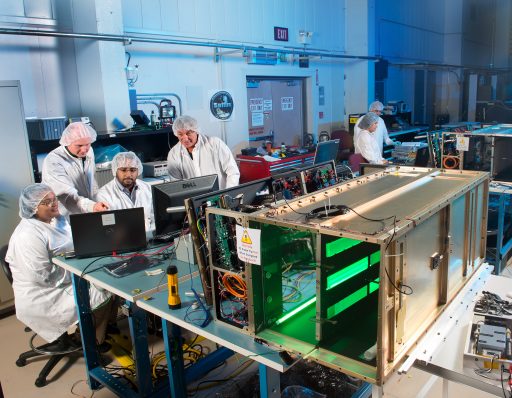
Installed within the system are temperature, oxygen and carbon dioxide sensors located at the intake of the flow duct and upstream of the fans. A pressure sensor and flow anemometers are placed at select locations to quantify the oxygen inflow. A pair of video cameras provide views of the sample and an LED light source periodically illuminates the sample to allow the measurement of the pyrolysis length.
For flame spread experiments, thermocouples are placed at varying lengths above the sample and a radiometer measures the broadband radiative emission from the sample to calculate the radiative heat flux from the sample towards its surroundings.
The sample material is approximately 0.4 by 1.0 meters in size, consisting of a panel of thin material. Ignition is accomplished with a hot wire along the upstream edge. The SAFFIRE-II test will use nine sample strips of 5 by 30 centimeters to assess the Maximum Oxygen Concentration (MOC) flammability limits of different materials.
The SAFFIRE I and III experiments will use a 40-centimeter wide and 94 centimeter long sample of 75% cotton and 25% fiberglass blend burned at two different flow speeds.
RED-Data2
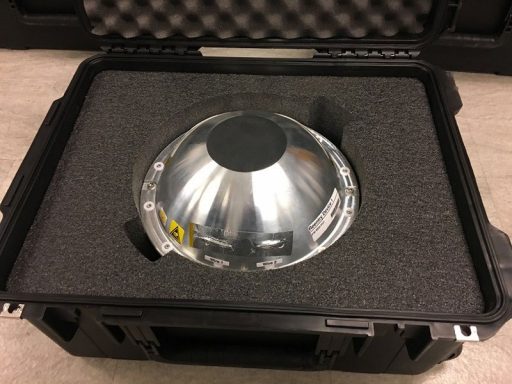
RED-Data2 is a new type of re-entry data recorder to be placed on spacecraft that are deliberately deorbited to capture data on how large satellites and pieces of space debris break-up during their blazing entry into Earth’s atmosphere. Studies of the break-up characteristics of vehicles and the entry environment are of great importance for improving models that predict if and where debris from a re-entering object can reach the ground.
RED-Data2 goes by the full name of ‘Thermal Protection Material Flight Test and Reentry Data Collection’ and sets out to demonstrate a new type of recording device that rides on a vehicle re-entering Earth’s atmosphere to deliver data about the extreme conditions the spacecraft encounters during atmospheric entry.
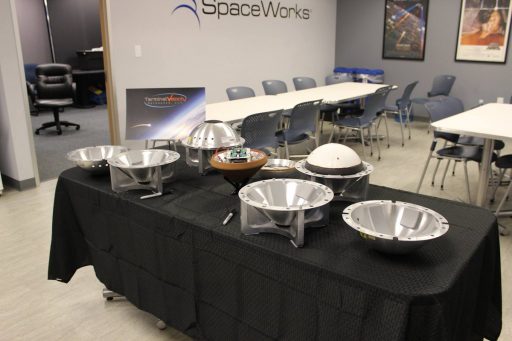
The Space Station’s cargo vehicle fleet in the past hosted a number of different re-entry recorders starting with the Re-Entry Break-Up Recorder REBR that was developed by the Aerospace Corporation and flew as part of a number of missions including those of Europe’s Automated Transfer Vehicle. iBall, a ball-shaped Entry Recorder developed in Japan, flew on several HTV missions and successfully captured in-cabin views as the spacecraft re-entered. BUC, the Break-Up Camera, flew on the ATV-5 mission but failed to transmit infrared imagery collected as the spacecraft broke up in the atmosphere. All in all, missions of entry recorders to date have achieved mixed results, many failed to send back data, some managed to phone home with partial data and only precious few delivered all their data before crashing into the ocean.
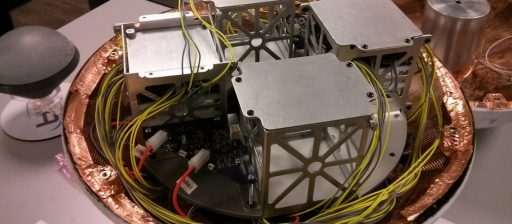
RED-Data2 is a soccer-ball sized capsule that pursues two areas of research, one being the collection of vehicle dynamics data during atmospheric entry and the other being the development of high-temperature heat shield materials suitable for sample return vehicles and planetary re-entry missions. By hitchhiking along with an expendable spacecraft, RED-Data2 can collect data on that vehicle’s break-up before being inserted into the high-temperature flow of re-entry for testing of new materials.
RED-Data2 is approximately 9 centimeters at its maximum diameter and has a mass of 2.4 Kilograms. The entire unit is packed in a protective aluminum housing that will separate and allow RED-Data2 to collect several minutes of data during free flight. RED-Data2 was developed by Terminal Velocity Aerospace, LLC with funding from NASA and technical assistance from the Aerospace Corporation.
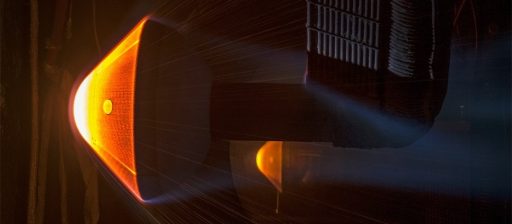
The RED-Data2 mission has the primary objective of testing two new variations of existing heat shield materials. The first is a new version of Avcoat which is used on the heat shield of the Orion spacecraft. The second test involves NASA’s Conformal Phenolic Impregnated Carbon Ablator (C-PICA) and Conformal Silicone Impregnated Refractory Ceramic Ablator (C-SIRCA) materials. PICA has been adapted by SpaceX to become a reusable heat shield for the Dragon spacecraft, capable of enduring many cycles and supporting high-speed re-entries after interplanetary missions.
The new materials were developed at NASA’s Ames Research Center and underwent extensive testing on the ground using arc-jet facilities, however, the actual re-entry environment is tough to simulate given the energy and air speeds involved when coming back from orbit.
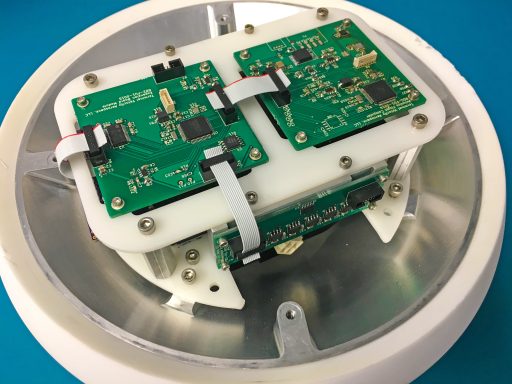
Avcoat was previously applied by injecting the Avcoat slurry into the individual cells of a honeycomb structure – a lengthy and labor-intensive process. The new development of molded Avcoat allows the material to be provided in large billets which can be machined into gores, potentially reducing cost over the manual injection process. Conformal gores are also a new development for the carbon and silicon ablator heat shields that previously consisted of tiles and gap fillers. Eliminating gap fillers takes away one of the weak spots of current heat shields.
Testing the new material at subscale using RED-Data2 provides a cost-effective way of validating their characteristics in an operational environment, going beyond the scope achievable in ground test facilities.
Instrumentation on RED-Data2 collects data on vehicle location, acceleration, temperature, pressure and orientation during re-entry, allowing the entire entry process to be modeled. Data is stored locally within RED-Data2 until the craft senses the ionizing plasma of re-entry is subsiding at which point an Iridium terminal transmits stored data through the global Iridium network prior to splashing down in the ocean.
Magnetic 3D Cell Culturing
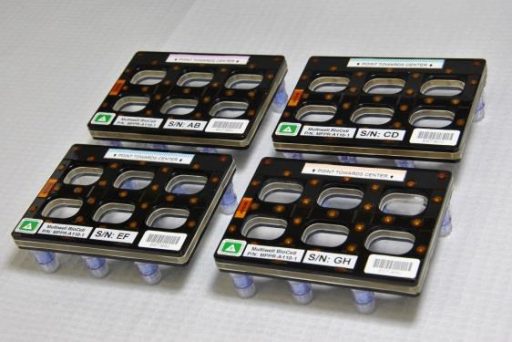
The Magnetic 3D Cell Culturing study employs magnetized cells and tools to make it easier to handle cell cultures during experimentation in microgravity.
In space, cell cultures can spontaneously grow in three dimensions which is of great value to science as it is more representative of how cells grow and function in living organisms (as opposed to a mostly 2D cell culture in a petri dish under normal gravity). However, a challenge coming with the space environment is the manipulation of cell cultures and this study will determine whether routine manipulation of cultures with magnetized cells & tools can ease the process of conducting cellular research in space and increase the reproducibility of experiments.
The experiment goes by the full name of ‘ Magnetic 3D Cell Culture for Biological Research in Microgravity’ and aims to validate magnetic cell culturing and bioprinting as a universal tool for 2D and 3D cell cultures in space, enhancing the Space Station’s scientific repertoire and permitting new studies to be performed in orbit. Practical challenges addressed by the experiment are the exchange of growth media without losing cells in culture and handling/retrieving cell cultures for analysis.
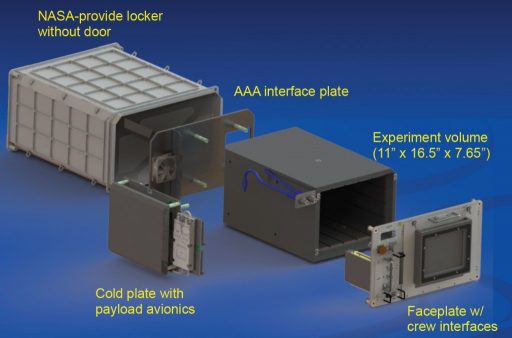
The basis for the experiment is found in a commercial cell levitation system developed by Nano3D Biosciences, Inc. (n3D) which binds magnetic nanoparticles to cells. Magnetic cells quickly build into magnetized 3D aggregates that are easily manipulated in culture using external magnets. This technology was adapted for use in space and could potentially allow for the generation of tissue-like characteristics in vitro that are more representative of native cell growth and function. n3D also developed a system that allows for the generation of 2D cell cultures forming in a monolayer. These two technologies can enable 2D and 3D cell culture studies in space and on Earth to help isolate the effect of gravity on biological processes.
The experiment uses four MultiWell BioCells and two BioCell Habitats that will be placed in the SABL bioreactor aboard ISS to run at +37°C and 5% Co2 to culture carcinoma (lung cells, Calu-3).
ADCs in Microgravity
Efficacy and Metabolism of Azonafide Antibody-Drug Conjugates in Microgravity (ADCs in Microgravity) will evaluate new antibody-drug conjugates. These ADCs combine an immune-activating drug with antibodies and specifically target cancer cells which increases the effectiveness of chemotherapy and reduces negative side effects.
Carrying out such studies in microgravity allows drugs to be tested on more realistic three-dimensional cell cultures that are more representative of tissues found in the human body. This specific study employs lung carcinoma cells to study the molecular interactions and efficacy of the new ADC in cancer cells, also supporting drug metabolism studies to assess the multiplier effect of ADC targeting.
NORS
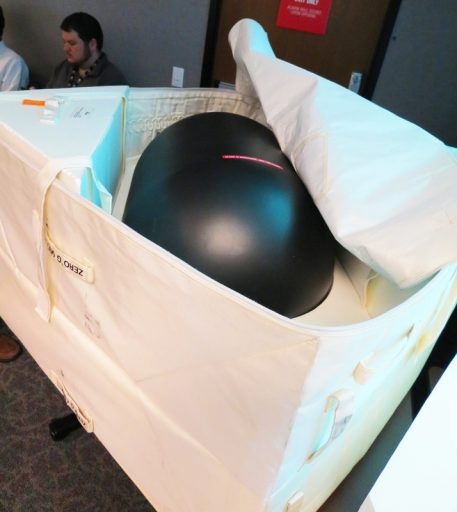
Cygnus is delivering Nitrogen/Oxygen Recharge System (NORS) Recharge Tank Assemblies (RTA) to the Space Station – a new generation of gas resupply missions aboard Commercial Cargo Vehicles. In previous years, breathable air for ISS repressurizations was delivered by the European ATV and the Russian Progress. With ATV flying its final mission in 2014/15, future ISS repressurizations rely on Progress and NORS alone.
The NORS RTAs are designed to re-fill the station’s existing air supply network that used to be replenished by the US Space Shuttle. Pressurized gas from that system is used in the repressurization of the ambient atmosphere of ISS, to deliver Oxygen to the astronauts when the Station’s primary systems fail, operate the Quest airlock and pressurize the Station’s cooling systems.
Each of the NORS RTAs is about 90 centimeters long, 53cm in diameter and weighs 109 Kilograms, either carrying pressurized oxygen or nitrogen. Each tank is pressurized to over 400 bar, more than twice the pressure of previous tanks.
Overall, 37 tanks were expected to be manufactured to be sent to the station multiple times since the tanks are fully re-usable.
Genes in Space II
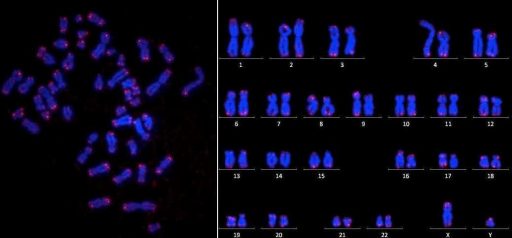
The Genes in Space II study involves the winning student experiment selected from 380 proposals submitted by teachers and students grades 7 to 12. The study seeks to evaluate whether the polymerase chain reaction (PCR) and miniPCR system are suitable tools for replicating DNA in space and make it possible to measure and monitor telomere length over the course of a space mission.
Telomeres are repetitive nucleotide sequences at the end of a chromosome – they do not hold information for protein synthesis but rather function as a protective cap. The length of the telomeres varies from 11,000 base pairs at birth to 4,000 base pairs at old age. In DNA replication, the telomeres act as disposable buffers and are truncated in the replication process.
The length of telomeres is affected by an individual’s health and external influences, thus providing a point of study for negative effects of adverse environments an organism may encounter, i.e. microgravity, space radiation.
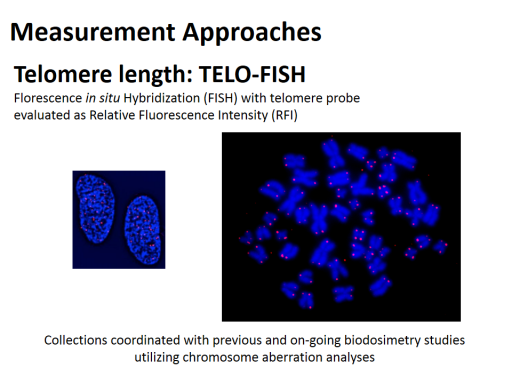
Spaceflight is a challenging situation for the human body due to the stress imposed by microgravity, harmful radiation, interrupted sleep, and poor nutrition. Prolonged exposure to the space environment causes symptoms similar to those manifesting for myocardial dysfunction, muscle atrophy, osteopenia and a variety of other diseases. Studies have also shown that spaceflight can cause changes to the human genome.
The possibility of telomere dynamics shifting during spaceflight could be a cause of symptoms of age related diseases, explaining why there is a strong desire in the scientific community to monitor telomere length over the course of a long-duration space mission. An experiment involving telomere research was conducted on the Year In Space mission of Scott Kelly with his twin brother acting as a control subject on Earth. This experiment showed signs of telomeres lengthening as a result of over 300 days spent in space – a finding that directly contradicts the hypothesis of aging symptoms being the result of shortened telomeres. To gather further data, a method is needed to measure telomere length during space flight.
Multiple techniques exist for measuring telomere length, but none have been proven suitable for use in the microgravity environment aboard the Space Station.
Single Telomere Length Analysis (STELA), a simple method for telomere measurement, uses deoxyribonucleic acid (DNA) amplification of telomeric repeats with the polymerase chain reaction (PCR). Genes in Space II determines whether telomeric DNA can be amplified in space in a proof of concept experiments that will feed into the development of an operational system to be deployed to ISS to monitor telomere length over the course of a space mission.
Benefits of developing a method for telomere measurements include understanding how spaceflight affects telomere length and astronaut health can be improved for future long-duration missions to more distant destinations. Results from these investigations can also help direct future research into telomere dynamics to reveal the connection between telomere dynamics and different diseases.
Genes in Space III
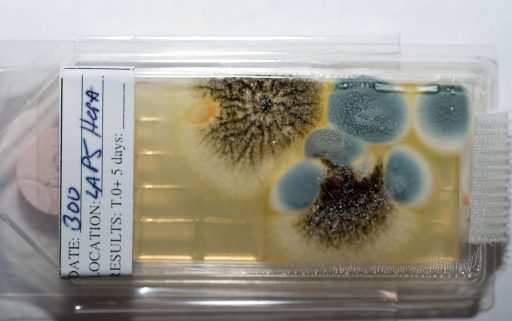
Genes in Space III aims to joint two spaceflight tested tools in the field of microbiology, specifically miniPCR for DNA replication and the MinION for DNA sequencing – creating a robust, user-friendly DNA sample preparation process to enable genomic research aboard the International Space Station.
An operational tool for DNA sequencing will allow the microbial environment aboard a spacecraft to be monitored via identification of microbes present in the crew environment to protect a crew’s well-being by informing real-time decisions and remediation strategies should potentially harmful microbes be detected. Genes in Space III seeks to demonstrate that DNA amplification and sample preparation for sequencing can be performed in microgravity using conventional methods modified only where necessary to function in Zero-G.
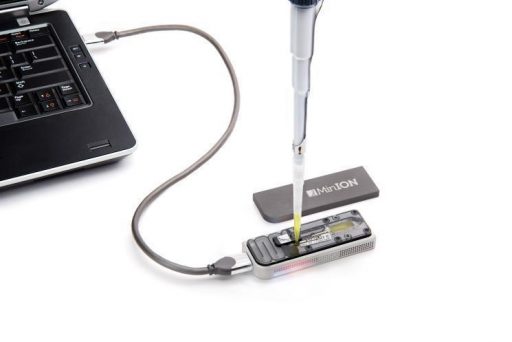
This study combines the miniPCR (Polymerase Chain Reaction) hardware for DNA replication and the MinION (Biomolecule Sequencer) to establish a sample-to-sequencer process and enable immediate microbial identification, constant monitoring of DNA changes undergone by crew members and analyzing DNA/RNA based life if present on other worlds.
The core piece of the Biomolecule Sequencer is MinION, the actual sequencing device coming at the size of a thumbdrive, 9.5 by 3.2 by 1.6 centimeters in dimension. The 120-gram device makes use of exchangeable flow cells that feature nanometer-scale pores through which DNA stands are passed while currents diagnostic of the DNA sequence are measured. A normal sequencing run with the device can last up to 48 hours and collected data is transmitted to a Microsoft Surface Pro3 via a USB Interface to be then downlinked to Earth.
CubeSats
The Cygnus OA-7 mission is carrying 38 CubeSats of various sizes, four Lemur-2 satellites are riding in a NanoRacks CubeSat Deployer installed on the exterior of the Cygnus spacecraft while the remaining 34 satellites are flying inside the pressurized cargo carrier of the spacecraft and will be deployed via the NRCSD on the end of the Japanese Robotic Arm.
